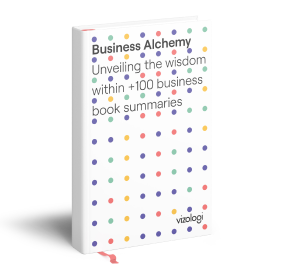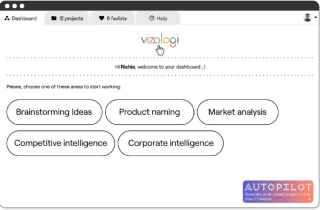Why Shoppers Pick Credit Cards over BNPL
Retailers love new payment tech; that is, until it stops converting. Buy Now, Pay Later (BNPL) once promised to revolutionize how consumers pay online, and sure, for a while, it did. But the numbers tell a more complex story. Payment cards account for over 56% of online purchases, with credit and charge cards accounting for 41.6% share. BNPL? It hovers around 6-8%. Even among younger shoppers, which is the demographic BNPL was supposed to dominate, a significant share continues to reach for their Visa or Amex at checkout.
So why do so many customers still prefer the “old” way to pay, even when flexible installment buttons are just as easy to tap? The answer has less to do with nostalgia and more with trust, transparency, and ecosystem maturity. After all, credit cards have decades of built-in consumer protections, fraud resolution processes, and credit-building benefits. BNPL, meanwhile, thrives on immediacy and accessibility, but that same frictionless experience can blur repayment clarity or leave credit history untouched.
For you as a seller, this isn’t a debate about which is “better.” It’s about understanding why certain customers instinctively gravitate to cards and how that preference should shape your conversion rates, fees, and risk exposure. The gap between credit cards and BNPL isn’t just behavioral; it’s structural. And as 2025 regulation begins to tighten BNPL’s flexibility while card networks roll out faster settlement and embedded finance features, the landscape is changing again in ways that matter directly to your margins and checkout strategy.
A Quick Distinction So You Can Sell Smarter
- Credit cards: Revolving credit lines; balance can be carried month-to-month; payments and balances commonly reported to credit bureaus; strong dispute and fraud protections; rewards frequently attached.
- BNPL: Transaction-specific installment plans (often 3–4 payments); usually presented at checkout as an alternative to cards; historically lighter regulation and credit reporting, though that is changing fast.
Why Many Shoppers Still Prefer Credit Cards
You’ll see several shopper motives repeat across segments:
1. Protections and recourse
Credit cards generally offer chargeback rights, fraud protection, and clearer dispute processes. For purchases where the product or service matters (like electronics, travel, home services), that peace of mind matters to buyers, and it lowers post-purchase issues for sellers.
2. Credit building and history
Using credit cards responsibly helps report positive activity to credit bureaus, which allows customers to access better financing later, such as mortgages or auto loans. If a buyer mentions they want to build a credit history, they’ll likely choose a card. Even credit cards with bad credit can help borrowers improve their scores while offering safeguards. (Check out 118 118 Money’s guide for more information).
3. Rewards and amortized value
Cashback, points, and extended warranties convert into tangible dollar value for frequent buyers. For higher-ticket purchases, the long-term value of rewards and protections often beats the marginal convenience of a short BNPL plan.
4. Familiarity and trust
Cards are a well-known quantity. BNPL, while fast-growing, still triggers caution among older and higher-income shoppers. Adoption skews younger for obvious reasons, with Gen Z being the leaders, but credit cards remain broadly used across demographics.
Conversion And Average Order Value (AOV)
BNPL often increases conversion and AOV, with some studies reporting AOV uplifts in the 20–40% range for merchants that add BNPL. That makes BNPL attractive if your business relies on incremental order growth or higher-ticket impulse purchases. However, here, too, context matters:
- For low-ticket impulse buys, BNPL can drive purchases that wouldn’t otherwise happen.
- For larger durable goods, cards still win if buyers value protections, warranties, or rewards accumulation.
As a seller, you want to weigh short-term revenue lifts (BNPL) against longer-term loyalty and dispute rates (cards). Use BNPL to capture marginal buys; use cards to anchor high-trust, high-lifetime-value (LTV) customers.
Fees And Merchant Economics
BNPL providers typically charge merchants a percentage plus a fixed fee, often comparable to or slightly higher than card rates, but terms vary. BNPL merchants may trade a higher processing fee for improved conversion and AOV. Meanwhile, card rates vary by card type (rewards vs. non-rewards) and merchant category.
Actionable point: model revenue per checkout both with and without BNPL across your product lines. Don’t assume BNPL always “pays for itself”; you’ll want to isolate incremental revenue versus margin erosion.
Risk, Fraud, And Operational Impact
BNPL can shift credit risk to lenders (good), but you may see different chargeback and fraud profiles. BNPL providers often underwrite borrowers at the point of sale, but underwriting quality differs across providers and geographies.
Also, BNPL’s historical gap in credit reporting created behavior where some consumers managed multiple BNPL plans concurrently, which is something regulators are trying to curb.
Expect operational overhead: returns handling, reconciliations, and disputes can differ materially versus card processing.
Regulatory Outlook
Regulation is the single biggest strategic variable for merchants. In the UK, the Financial Conduct Authority (FCA) is bringing BNPL (termed Deferred Payment Credit) into regulation with rules effective as BNPL comes under its remit in 2026, requiring affordability checks, complaint handling, and reporting.
In the U.S., the CFPB and other agencies are increasing scrutiny; reporting and affordability requirements are likely to tighten. Those changes will affect provider economics, underwriting, and the presence of regulatory liabilities for merchants who operate BNPL via third parties. You’ll want to plan accordingly.
Simple Scoring Matrix For Founders
Use this two-axis matrix to decide whether to offer BNPL, cards-only, or both. Score each cell 1–5 (higher = more favorable), then multiply by weight.
Criteria
- Ticket size (Low / Medium / High)
- Audience (Price-sensitive / Rewards-oriented / Credit-building / Younger Gen)
- Conversion sensitivity (Low/High)
- Margin tolerance (Low/High)
- Regulatory exposure (Low/High)
Example weights (these are adaptable):
- Ticket size: 30%
- Audience fit: 25%
- Conversion sensitivity: 20%
- Margin tolerance: 15%
- Regulatory exposure: 10%
How to use: For a $50 product aimed at Gen Z with high conversion sensitivity, BNPL might score high (sum ? BNPL recommended). For a $1,200 appliance sold to rewards-oriented buyers, cards score higher (sum ? prioritize card checkout with BNPL as an optional alternative).
Long-Term Benefits And Objective Caveats
- Cards build credit and aggregate value. Responsible card use feeds credit files and unlocks better financing and offers for consumers later. Cards also bring extended warranties, purchase protection, and clearer dispute mechanisms. These are features that reduce seller returns if customers feel protected.
- Caveats: Cards carry revolving debt risk; higher delinquency rates exist among certain card cohorts compared with BNPL short-term plans. BNPL historically had lower delinquency at point of sale but can encourage overextension if consumers juggle multiple plans. Recent data show BNPL growth is rapid, and delinquency patterns vary by provider and country; regulators are acting on both sides.
Tactical Takeaways For Sellers
- A/B test checkout flows. Show BNPL as an option but keep card checkout simple; measure AOV, conversion, and chargeback rates separately.
- Segment offers by ticket and audience. Use BNPL on mid-range items where conversion gain outweighs fees; favor cards on high-trust purchases.
- Instrument post-purchase metrics. Track disputes, returns, LTV by payment method.
- Watch regulation closely. The FCA and CFPB actions in 2025–2026 will change compliance costs and reporting obligations; budget for that.
- Educate customers. Explain protections for both options at checkout (and the credit implications). That reduces disputes and builds trust.
Offering both payment rails often makes sense, especially if you want your business to grow. However, not always. You want to be deliberate: test, measure, and adapt the scoring matrix above to your SKU economics and audience profile.
Final Thoughts
BNPL isn’t replacing credit cards, but is reshaping how shoppers think about flexibility at checkout. The smartest move isn’t choosing one over the other, but knowing when each payment method adds value to your business model. Credit cards still anchor trust, credit-building, and purchase protection, while BNPL captures impulse-driven and price-sensitive buyers. Your goal is to balance both intelligently, guided by data, ticket size, and audience fit.

Vizologi is a revolutionary AI-generated business strategy tool that offers its users access to advanced features to create and refine start-up ideas quickly.
It generates limitless business ideas, gains insights on markets and competitors, and automates business plan creation.


